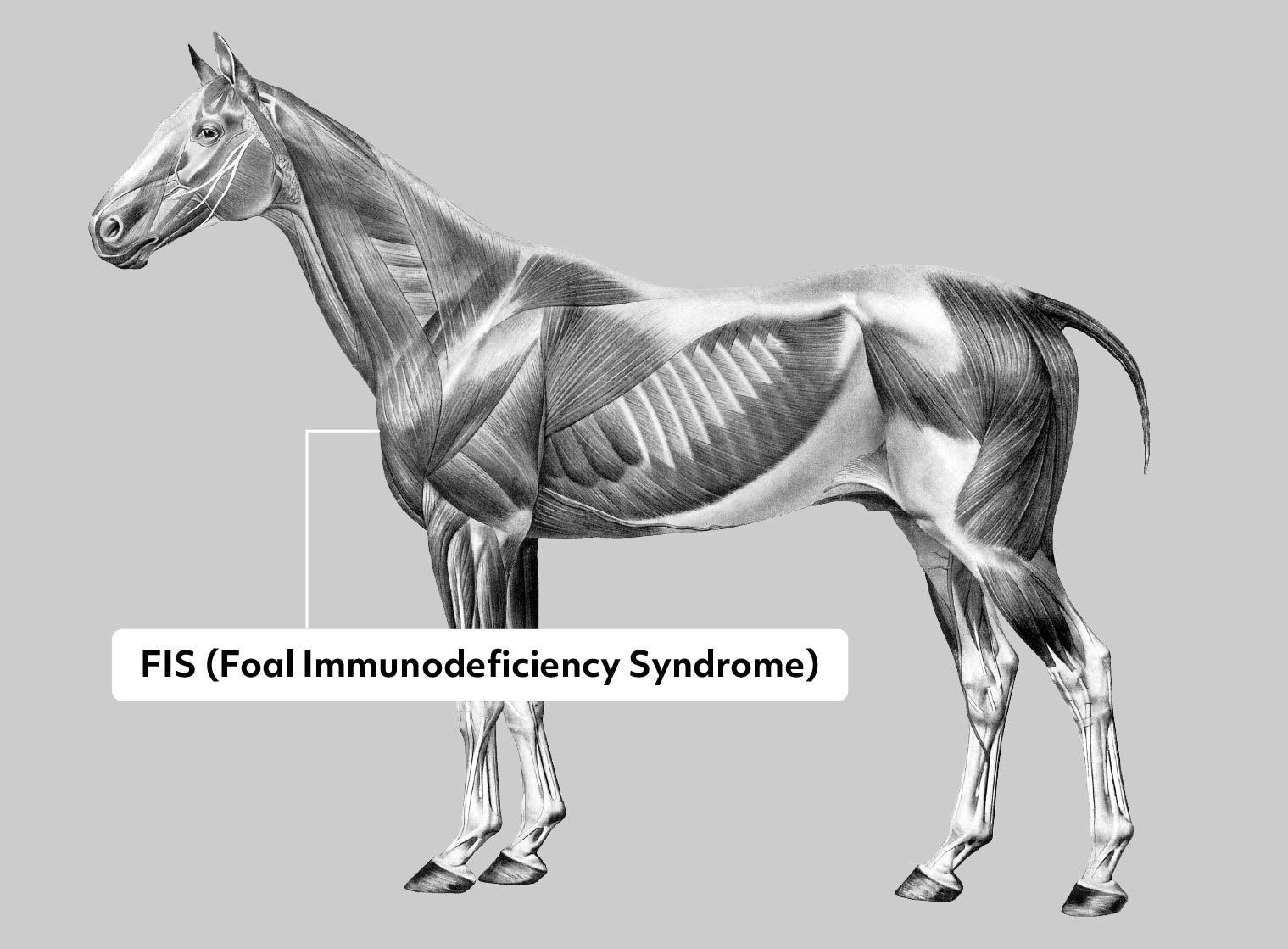Foal Immunodeficiency Syndrome (FIS)
Gene or Region: SLC5A3
Reference Variant: C
Mutant Variant: T
Affected Breeds: Dales Pony and Fell Pony
Research Confidence: High confidence - Findings reproduced in multiple studies
Explanation of Results: fis/fis = homozygous for Foal Immunodeficiency Syndrome, trait expressed fis/n = heterozygous for Foal Immunodeficiency Syndrome, carrier n/n = no variant detected
General Description for Foal Immunodeficiency Syndrome
Foal Immunodeficiency Syndrome (FIS) is a failure in the development of the adaptive immune system. At 3-6 weeks of age, once the maternal antibodies begin to degrade, foals exhibit signs of anemia, diarrhea, and pneumonia. As these foals fail to respond to treatment for infections, they are humanely euthanized at a young age. FIS is an autosomal recessive condition, thus a horse must inherit two copies of the allele (fis/fis) to show any signs. Horses with only one copy of the allele (fis/n) are known as carriers due to their ability to produce affected foals.
Gene Information
SLC5A3 is a transporter involved in the response to osmotic stress. There are no known natural variations associated with diseases in any species, though “knock out” mice (which have had the gene experimentally removed) die shortly after birth from hypoventilation. This mutation is a single base substitution that alters an amino acid, likely changing the function of the encoded protein.
References
Fox-Clipsham LY et al., “Identification of a mutation associated with fatal Foal Immunodeficiency Syndrome in the Fell and Dales pony.” (2011) PLoS Genet. 7: e1002133. PMID: 21750681
Fox-Clipsham LY et al., “Population screening of endangered horse breeds for the foal immunodeficiency syndrome mutation.” (2011) Vet Rec. 169: 655. PMID: 22016514
Tallmadge RL et al., “Fell Pony syndrome: characterization of developmental hematopoiesis failure and associated gene expression profiles.” (2012) Clin Vaccine Immunol. 19: 1054-64. PMID: 22593239
Carter SD et al., “Foal immunodeficiency syndrome: carrier testing has markedly reduced disease incidence.” (2013) Vet Rec. 172: 398. PMID: 23486505
More Horse Health
Congenital Stationary Night Blindness 2
Congenital Stationary Night Blindness (CSNB) is an inherited disorder in horses characterized by an inability to see in low-light or dark conditions. This condition is present from birth and does not worsen over time. Common indicators include a horse’s reluctance to enter dark environments, difficulties in locating food and water in the dark, and a propensity for nighttime injuries.
Equine Arteritis Virus Resistance
Equine Arteritis Virus Resistance (EAVR) is an infectious disease with a broad range of symptoms, though most horses will not display any overt signs. Infection can result in abortion in pregnant mares, and some stallions persistently shed the virus through their semen.
